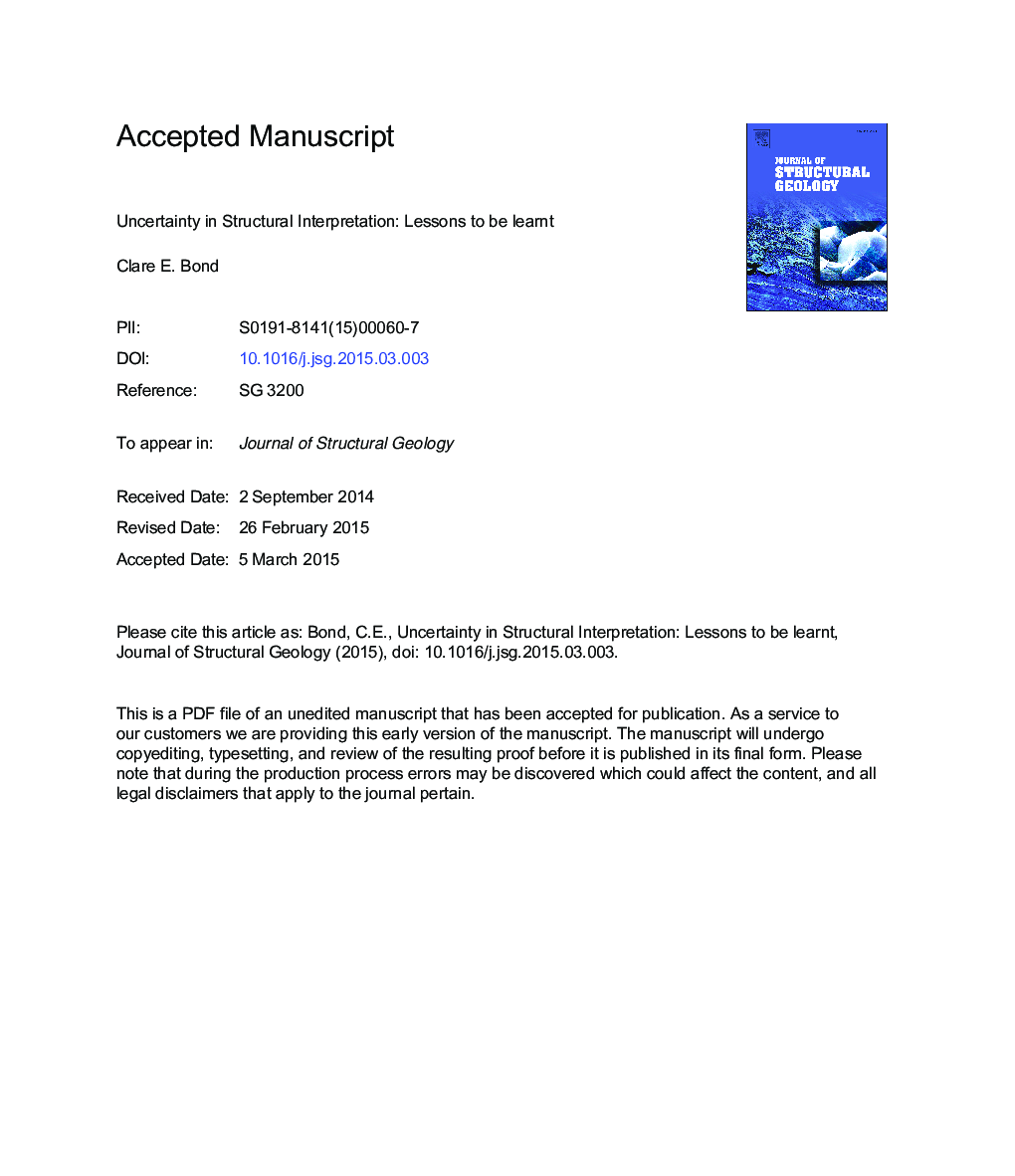| Article ID | Journal | Published Year | Pages | File Type |
|---|---|---|---|---|
| 6444726 | Journal of Structural Geology | 2015 | 72 Pages |
Abstract
Uncertainty in the interpretation of geological data is an inherent element of geology. Datasets from different sources: remotely sensed seismic imagery, field data and borehole data, are often combined and interpreted to create a geological model of the sub-surface. The data have limited resolution and spatial distribution that results in uncertainty in the interpretation of the data and in the subsequent geological model(s) created. Methods to determine the extent of interpretational uncertainty of a dataset, how to capture and express that uncertainty, and consideration of uncertainties in terms of risk have been investigated. Here I review the work that has taken place and discuss best practice in accounting for uncertainties in structural interpretation workflows. Barriers to best practice are reflected on, including the use of software packages for interpretation. Experimental evidence suggests that minimising interpretation error through the use of geological reasoning and rules can help decrease interpretation uncertainty; through identification of inadmissible interpretations and in highlighting areas of uncertainty. Understanding expert thought processes and reasoning, including the use of visuospatial skills, during interpretation may aid in the identification of uncertainties, and in the education of new geoscientists.
Related Topics
Physical Sciences and Engineering
Earth and Planetary Sciences
Geology
Authors
Clare E. Bond,
